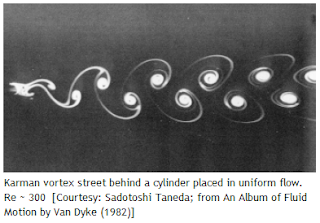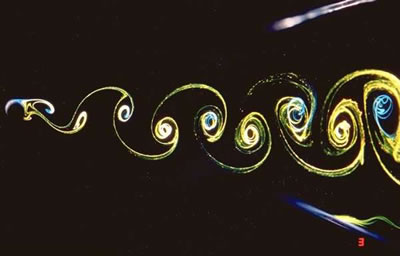 |
|
|
[Sponsors] | |||||
Can OpenFOAM generate flow at the speed of light? |
 |
|
|
LinkBack | Thread Tools | Search this Thread | Display Modes |
|
|
|
#1 |
|
New Member
Michel Van de gaer
Join Date: Oct 2009
Location: Brussels
Posts: 16
Rep Power: 16  |
Hello,
I've been working on an art concept and I would like to know if it is scientifically possible. The concept is that electrons are formed out of turbulences in a flow of stardust, that is similar to the flow of liquids only this flow is made out of super tiny particles, and moves at the speed of light, and it would also generate gravity. Now I would like to start simulating this action, and I'm looking for the right program to do so. A friend suggested me OpenFOAM; and I would like to know if it could handle the job. I wanted to use a more "simple" cgi program such as Blender but the particles it emits aren't chargeable. For a more extended explanation and much more please visit my blog: http://800millionparticles.blogspot.com If anyone would like to help me with this concept, you are more than welcome  best wishes, michel The general idea:  The Kármán vortex street is a term in fluid dynamics for a repeating pattern of swirling vortices caused by the unsteady separation of flow of a fluid over bluff bodies. (source wiki: http://en.wikipedia.org/wiki/Karman_vortex_street) Oxygen molecules travel at the speed of 400 m/s Light travels at the speed of 300 000 000 m/s Now suppose that super tiny stardust particles surrounds us far more densely, and imagine that "electrons" are similar to the turbulences in the "Karman Vortex Street" , and the fact that there 's a flow. Because of the small size of these particles and the high energy flow, the street can be relatively spun out much longer in a more straight wave. But the turbulence fields would be far more energetic, larger and denser than those of water molecules. The generated (S) vortex fields would be a transformer of stardust flow into electrons.  Imagine that motion is a spiral, creating an upwards tunnel, wherein the (S) vortex-fields are like the flip-flopping vertices in the animation above, but 90°turned. _vortex.jpg) An (S) vortex seen from the top and front at fast and slow speed, spinning it's way up. Now look at the clip below of electrons popping up, they could very well be dense turbulence fields that are formed due to the flow between two opposite fields. This dynamic of flow should resemble the YouTube clip of "The Motion of a Single Electron", link: http://www.youtube.com/watch?v=wQ_MVoj1EZY
__________________
Dance…even if you have nowhere to do it but in your own living room. Mary Schmich (Wear Sunscreen - Baz Luhrmann) |
|
|
|

|
|
|
|
|
#2 |
|
New Member
Join Date: Oct 2009
Posts: 11
Rep Power: 16  |
Hi
so you want to simulate a van Karman vortex street with electrons? The point is, a vortex street is not necessarily turbulent, the pattern you see there is an alternating seperation of flow, which is periodic and unsteady, but not turbulent. And I don't know, how much analogies you can find between flow of stardust and fluids like water. To get a vortex street, you need to keep the Reyonolds number (the Re in the text under the vortex street picture) in about the same range - a bit up or down is fine. So if you can find the kinematic viscosity of stardust, you're fine (in theory) - then you can scale your cylinder and simulate it with the speed of light - I never tried it, but you can enter any value you want. If it works is another thing, and I don't know if there are any solvers or models that include the effects which may occur on light speed. But the whole story could then be done at any other speed (and probably way more easier and less CPU expensive) - you just need to keep the Re number in the same range (Re = (speed * length)/ kinematic viscosity). So no need for light speed. Hope that helped, Bastian Last edited by Bastian; October 22, 2009 at 18:24. |
|
|
|

|
|
|
|
|
#3 | |||||
|
New Member
Michel Van de gaer
Join Date: Oct 2009
Location: Brussels
Posts: 16
Rep Power: 16  |
Hello Bastian,
Thx for your answer although it has brought up more questions than a solution ^_^ Quote:
 Quote:
 Quote:
Either stardust is all there is and energy flows through it, or everything is formed out of bundles of stardust kept together by energy. Quote:
Is it possible to just play with the different parameters in OpenFOAM and see what happens? Where lays the difference between this simulation and when one would use a propellor and generate a field like the ship above. Quote:
Mmmh, overall I think I was naďve to try and replicate the movement of a spinning electron that snaps away from an atom with a Von Karman street type of simulation. Just one final question, for someone who isn't that quick with maths is there an other more intuďtve program than OpenFOAM, or is OpenFOAM the program to use, and once you get a hang of it, it is easy to tweak? best, m.
__________________
Dance…even if you have nowhere to do it but in your own living room. Mary Schmich (Wear Sunscreen - Baz Luhrmann) |
||||||
|
|

|
||||||
|
|
|
#4 | |
|
New Member
Paul Schiefer
Join Date: Sep 2009
Posts: 25
Rep Power: 16  |
Dear Michael,
I have only limited knowledge about stardust, general relativity and ship propellors. Therefore I find it difficult to judge whether you have a solid background in the fields that you try to combine plus an interest in esoteric stuff or whether you think that openfoam may be an interesting application for your esoteric ambitions. But when you write E=mc^2 below your sketch, where it makes no sense, and talk about coils that make up electrons and the size of electrons, I doubt that you know what you are talking about. Quote:
|
||
|
|

|
||
|
|
|
#5 |
|
New Member
Michel Van de gaer
Join Date: Oct 2009
Location: Brussels
Posts: 16
Rep Power: 16  |
Hello Paul,
I understand very well where you are coming from and you are right, I do not have enough knowledge to know what everything is about. Over the last few centuries scientist have come up with simple solutions and formulas to place numbers on the forces such as gravity, energy and how electrons behave at atomic level. But when it comes down to understanding what actually drives these forces we are still in the dark, therefor scientist are smashing up particles to understand it, so at this point there is no one on this planet who can prove what the true nature of it all is. The general theory in that everything is made up quarks and even smaller the Higgs boson, which should explain us how gravity works. Some scientist have even come up with string theory where there are more than 3 dimensions. Now I think everything might be build up out of the same tiny stardust, or like to old greeks would say átomos which means uncuttable, and that matter is always an organization of basic turbine-movements who influence each other by emitting smaller particles (energy waves). And the interesting thing is that technology has evolved in such a way that computers can simulate the dynamics and interactions of flow, even to the speed of light like Bastian suggested. Now I can very well be wrong, but a computer simulation of interacting turbulences from one as big as a planet that emits these particles, to as small as atoms, could give us a positive or negative answer. And with the concept of a spinning (8) ball, that could generate two opposite poles (180° shift), there might be some interesting interaction, instead of working with the mathematical easy to use gravity particle. So out of curiosity I would like to see if the idea could fly, if it not so be it. ... and from my experience programs always evolve to become more intuitive and easily tunable with lots of presets, so that why I'm asking. kind regards, michel
__________________
Dance…even if you have nowhere to do it but in your own living room. Mary Schmich (Wear Sunscreen - Baz Luhrmann) Last edited by Michel_sharp; October 23, 2009 at 15:54. |
|
|
|

|
|
|
|
|
#6 |
|
New Member
Join Date: Oct 2009
Posts: 11
Rep Power: 16  |
Hi again
I'm sorry if I was not clear, I said you can enter any value - but if it works or makes sense at all is something different. I was just refering to the Re number, and said if you keep it constant it should be the same pattern. That does not mean, that there are additional effects included that would appear at such high speeds (I don't know what would happen in "reality") - thats kind of solver dependendt, and as I said, I don't know (actually I doubt it), that there are solvers for that. And I have to dissapoint you, I have no idea how to calculate the viscosity for sth like stardust. Playing with the parameters can be very dissapointing as well if you don't know what you're doing, cause it takes quite a while before you get results in most cases, and if you don't have a solid background in CFD or fluid dynamics in general and no one to teach you... It is not like pressing two buttons and done. But you can try it for free  Regards Bastian |
|
|
|

|
|
|
|
|
#7 | ||
|
New Member
Michel Van de gaer
Join Date: Oct 2009
Location: Brussels
Posts: 16
Rep Power: 16  |
Quote:
 Quote:

__________________
Dance…even if you have nowhere to do it but in your own living room. Mary Schmich (Wear Sunscreen - Baz Luhrmann) |
|||
|
|

|
|||
 |
|
|
 Similar Threads
Similar Threads
|
||||
| Thread | Thread Starter | Forum | Replies | Last Post |
| Modified OpenFOAM Forum Structure and New Mailing-List | pete | Site News & Announcements | 0 | June 29, 2009 05:56 |
| OpenFoam LES+Supersonic flow | Danilo Bruno | Main CFD Forum | 0 | January 21, 2009 04:56 |
| problems in high speed external flow | jon william | FLUENT | 2 | January 14, 2007 06:37 |
| Can 'shock waves' occur in viscous fluid flows? | diaw | Main CFD Forum | 104 | February 16, 2006 05:44 |
| low speed compressible two phase flow?? | cat | CFX | 0 | November 15, 2005 07:59 |